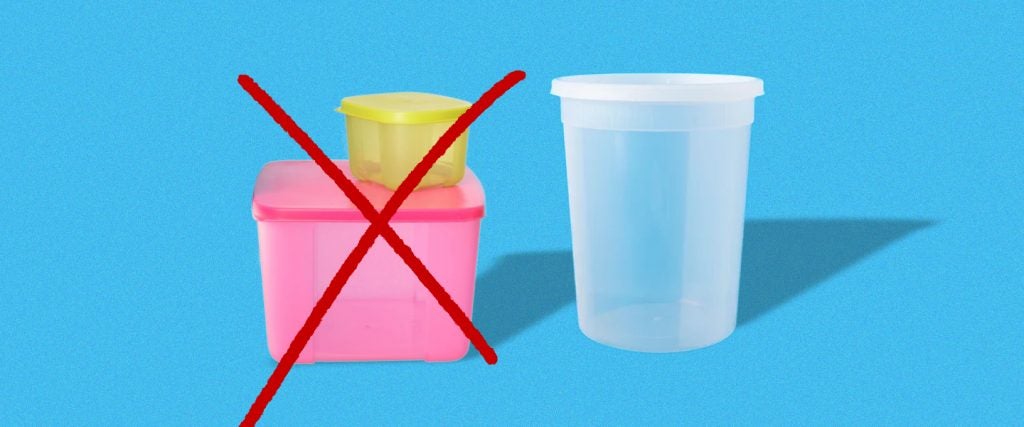One of the few glimmers of joy in a 2020 full of discord and pandemic malaise for me was moving to a new city and exploring it by eating out as often as I could. My local diner, the corner pizza shop, Pakistani food, Mission-style burritos, Yucatan specialties, Korean fusion, Cal-Italian — I attempted to inhale every delicious thing in a two-mile radius of me, one takeout phone order at a time.
This streak of splurge eating led to one convenient side effect: I started collecting a number of matching plastic deli quart containers, complete with mix-and-match lids, even though they came from a bunch of different restaurants.
This wasn’t my first dance with plastic quart containers: Basically every professional kitchen I’ve ever seen uses them for storage, including the sushi restaurant where I worked as a teen. They’re versatile for holding sauces, stocks or prepped ingredients; they stack neatly and can be quickly labeled with a pen and a piece of painter’s tape.
At home, I soon found myself reaching for old deli quarts when I needed to store leftovers, choosing them over the few pieces of plastic and glass Tupperware I owned. It didn’t take long before the realization set in: I hated fumbling with the stupid stack of Tupperware. I hated grabbing a lid only to realize it was one size away from what I needed. And, in contrast, what I truly loved was my little column of deli quart containers, nestled neatly alongside a row of identical lids.
The vision radicalized me for good. For the average person, buying plastic and glass Tupperware is a hindrance, not a benefit. There is a superior option, and it has been sitting here, waiting for our embrace this entire time. The venerable deli quart container is more than a single-use vessel for corn chowder and pho — it deserves to live on, finding glory through reuse.
Most deli containers today are rated as safe for use in the freezer, microwave and dishwasher, but the idea isn’t to use them forever — there are concerns about microplastics leaching out of reused plastic containers, especially when you apply high heat to them (as in a microwave). I personally limit this risk by transferring food from the deli container to a different vessel before it hits the microwave, and by replacing older containers as soon as they show signs of physical wear. But to be frank, using BPA-free containers in the microwave is a small risk I’m willing to take, especially given the same concerns apply to many types of plastic Tupperware, too.
The upside just can’t be ignored. These little deli quarts are so much lighter than conventional Tupperware, making them easy to toss into any drawer or cupboard. And even if you don’t collect them via takeout orders, deli quarts are so damn cheap. A normal set of Tupperware is often upwards of $30 for around 18 pieces, which vary in size and usefulness; meanwhile, deli quarts are about $5 for a pack of 24 containers and lids from a restaurant supply store. Want to order in bulk? It’s only around $50 for a pack of 240 units. (It’s also true, what they say: Water or soda out of a deli cup just hits harder.)
Go look at your Tupperware, right now. Does it please you? Do you feel like it serves your needs with the humble versatility you deserve? If it does, congrats: There’s no reason to change course. But if like me, you sense discord amid the glass and plastic, perhaps it’s time to consider a different lifestyle — something simpler, yet all the more elegant, able to accommodate everything from leftover rice to a slice of cake.
Thus, we declare: All hail the working-class food storage vessel, the deli quart container. Trad Tupperware is dead. Long live the deli quart.

